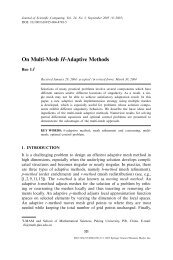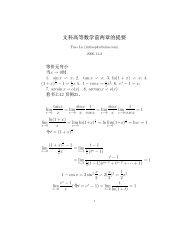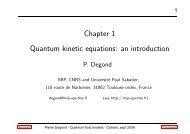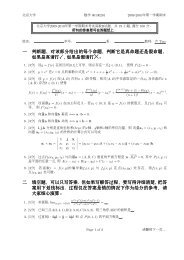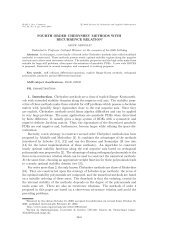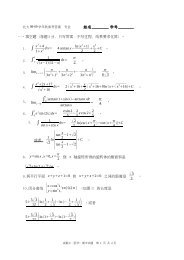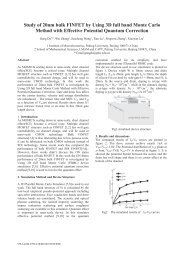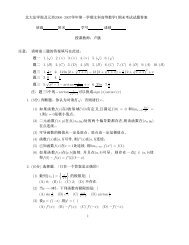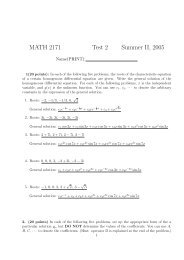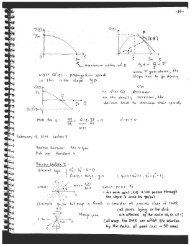Abstract
Abstract
Abstract
You also want an ePaper? Increase the reach of your titles
YUMPU automatically turns print PDFs into web optimized ePapers that Google loves.
CHAPTER 3. BIFURCATION ANALYSIS 64<br />
GMRES was able to more efficiently solve the linear systems in the Householder<br />
continuation than in the bordering method.<br />
3.9 Results<br />
Once the simulator was connected with LOCA, the first thing we wanted to do was<br />
analyze the original grid Nx = 86, Nk = 72 that our project’s physicists and engi-<br />
neers had used in reporting results to the scientific community. These results [8],<br />
[40] reported hystersis in the current-voltage (I-V) curves and current oscillation for<br />
some values of applied bias. Figure 3.6 shows a forward sweep in bias from V =0to<br />
V =0.480, with increments of 0.08 taken in bias. As you can see, the I-V curve drops<br />
suddenly at 0.318 volts to a lower curve and continues on. In the reverse bias case,<br />
wherewestartatV =0.480 and reduce by 0.08 volts to V = 0, the I-V curve follows<br />
out this lower branch, but does not jump up at 0.318 volts. Instead, it continues along<br />
this lower curve, until it jumps back up to the upper curve at 0.256 volts. Figure 3.7<br />
shows the window of voltage that creates current oscillation within the device. We<br />
can see the oscillation onsets between 0.240 volts and 0.248 volts and turns off again<br />
between 0.256 volts and 0.264 volts.<br />
Using LOCA’s pseudo arc-length continuation algorithm and eigensolver, we were<br />
able to explain why these phenomena occur. Figure 3.8 shows the I-V curve generated<br />
by LOCA. LOCA has found two turning points: one at 0.256 volts and one at 0.318<br />
volts. The branch connecting the two is an unstable steady-state solution branch,




